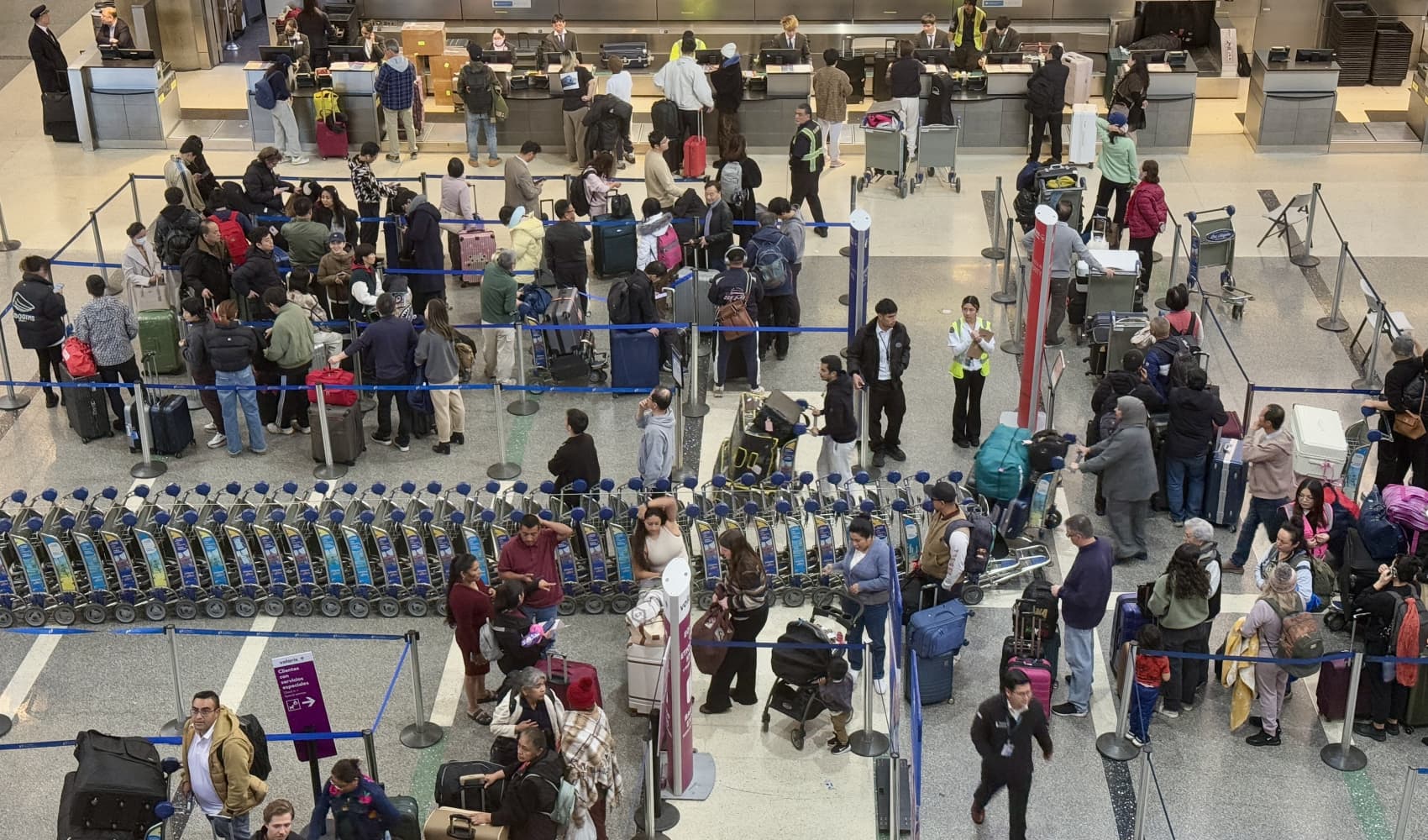Falling Prices! Airfare, Produce, TVs: What's Cheaper Now?
Pocketbook Relief: Where Are Prices Actually Falling?
Introduction: Good News for Your Wallet (Maybe!)
Let's face it: inflation has been the uninvited guest at every dinner table conversation for the past year. We're all feeling the pinch, from filling up our gas tanks to stocking up on groceries. But here's a glimmer of hope: while overall inflation remains stubbornly high, some prices are actually starting to come down. Think of it as finding a twenty-dollar bill in your old jeans – a small but welcome surprise!
The U.S. economy is a vast and complex machine, and not every part is experiencing the same inflationary pressures. So, where can you find these pockets of price relief? Let’s dive in and explore where consumers are seeing prices decline, and what it might mean for your budget.
Airfare: Taking Flight Toward Affordability
Remember when booking a flight felt like entering a bidding war? Thankfully, those days appear to be (partially) behind us. Airline fares have seen some deflation recently, offering a bit of respite for travelers. But why is this happening?
Fuel Prices and Increased Capacity
One major factor is the fluctuation of fuel prices. While still elevated compared to pre-pandemic levels, a slight dip in jet fuel costs can translate to lower ticket prices. Additionally, airlines are gradually increasing their capacity, offering more flights and more seats, which helps to ease the demand-driven price hikes we saw in 2022 and early 2023.
Seasonal Fluctuations
It's also worth noting the cyclical nature of airfare. Prices typically decrease after peak travel seasons, like summer and the holidays. So, if you’re planning a trip, consider traveling during the off-season for better deals.
Produce: Fresh Savings in the Aisles
Who doesn’t love a vibrant salad or a juicy piece of fruit? But rising grocery costs have made healthy eating feel like a luxury for some. The good news is that certain types of produce are experiencing price declines.
Weather Patterns and Supply Chains
The price of produce is heavily influenced by weather patterns and the efficiency of supply chains. A favorable growing season for a particular crop can lead to a surplus, driving prices down. Conversely, droughts or disruptions to transportation can cause prices to soar. Think of it like a delicate dance between Mother Nature and logistics.
Seasonal Availability
Just like airfare, produce prices are also subject to seasonality. Strawberries are generally cheaper in the spring and summer, while apples are more affordable in the fall. Paying attention to what’s in season can help you save money and enjoy the freshest flavors.
Consumer Electronics: The Tech Price Plunge
Want to upgrade your TV or snag the latest gadget? You might be in luck. Consumer electronics, including TVs, computers, and smartphones, have been experiencing a period of price deflation.
Technological Advancements and Increased Competition
The rapid pace of technological advancement is a key driver of this trend. As new models are released, older versions become less desirable, leading to price cuts. Furthermore, fierce competition among electronics manufacturers forces them to offer competitive prices to attract customers. It's a win-win for consumers.
Inventory Management
Another factor is inventory management. Retailers often offer discounts on older models to clear out inventory and make room for new arrivals. Keep an eye out for clearance sales and special promotions to score some serious deals.
Energy: A Rollercoaster Ride
Energy prices, particularly gasoline, have been a major source of anxiety for consumers. While prices remain volatile, there have been periods of decline, offering some temporary relief.
Global Events and Geopolitics
Energy prices are notoriously sensitive to global events and geopolitical tensions. Conflicts, supply disruptions, and changes in OPEC policies can all have a significant impact on the cost of oil and gas. It’s a complex game of supply and demand on a global scale.
Government Policies and Regulations
Government policies, such as taxes and regulations, also play a role in determining energy prices. Subsidies for renewable energy sources, for example, can help to reduce reliance on fossil fuels and potentially lower overall energy costs in the long run.
Household Goods: A Mixed Bag
From furniture to appliances, household goods make up a significant portion of our expenses. While some items may be experiencing price declines, others are still affected by inflation, creating a mixed bag for consumers.
The Consumer Price Index (CPI): Your Economic Compass
The Consumer Price Index (CPI) is a crucial tool for understanding inflation and deflation trends. It tracks the average change over time in the prices paid by urban consumers for a basket of consumer goods and services. Think of it as a report card for the economy, providing insights into how prices are changing across various categories.
Deflation vs. Disinflation: Knowing the Difference
It's important to distinguish between deflation and disinflation. Deflation is a decrease in the general price level of goods and services, while disinflation is a slowing down in the rate of inflation. In other words, prices are still rising, but at a slower pace.
The Impact of Interest Rates: A Balancing Act
The Federal Reserve's decisions regarding interest rates play a critical role in managing inflation. Raising interest rates can help to cool down the economy and curb inflation, but it can also slow down economic growth. It's a delicate balancing act that policymakers must carefully consider.
Is This the End of Inflation? Not Quite.
While the price declines in certain sectors are encouraging, it's important to remember that overall inflation remains above the Federal Reserve's target level. We're not out of the woods yet, but these pockets of deflation offer a glimmer of hope that things are moving in the right direction.
How to Take Advantage of Falling Prices
So, how can you capitalize on these price declines? Here are a few tips:
- Plan your travel during off-peak seasons.
- Shop for seasonal produce.
- Look for clearance sales on electronics.
- Compare prices from different retailers.
- Take advantage of loyalty programs and discounts.
Beyond the Headlines: A Deeper Dive into the Data
Don't just rely on the headlines; take the time to delve deeper into the economic data. The Bureau of Labor Statistics (BLS) provides detailed information on the CPI and other economic indicators. This information can help you make informed decisions about your spending and investments.
The Future of Prices: What to Expect
Predicting the future of prices is a challenging task, as numerous factors can influence inflation and deflation trends. However, economists generally expect inflation to gradually decline over the next year or two, as supply chain issues ease and the Federal Reserve continues to tighten monetary policy. But as they say, past performance is not indicative of future results, so we have to keep a close eye on evolving trends.
The Role of Government Policies: Shaping the Economic Landscape
Government policies, such as fiscal stimulus and infrastructure spending, can have a significant impact on prices. It's important to understand how these policies may affect the overall economy and your personal finances.
The Psychological Impact of Inflation: Feeling the Pinch
Inflation can have a significant psychological impact, leading to anxiety and uncertainty about the future. It's important to stay informed and manage your finances wisely to cope with the challenges of rising prices.
A Word of Caution: Don't Go Overboard
While it's tempting to splurge on discounted items, it's important to avoid overspending. Stick to your budget and prioritize your needs over your wants. A well-planned budget will help you weather the storm of inflation and deflation.
Conclusion: Navigating the Economic Seas
While inflation remains a concern, it's encouraging to see prices declining in certain sectors like airfare, produce, and electronics. By understanding these trends and taking advantage of opportunities to save, you can navigate the economic seas and protect your wallet. Remember, knowledge is power, so stay informed and make wise financial decisions. Even small savings can add up over time!
Frequently Asked Questions (FAQs)
- Why is inflation still high even though some prices are falling?
Overall inflation reflects the average price change across a wide range of goods and services. While some categories are experiencing deflation, others, like housing and healthcare, may still be rising, keeping the overall inflation rate elevated.
- How can I find the best deals on airfare?
Use travel comparison websites, be flexible with your travel dates, consider flying on weekdays instead of weekends, and sign up for airline loyalty programs to earn points and discounts.
- What are the best ways to save money on groceries?
Plan your meals in advance, create a shopping list, stick to your list, shop at discount grocery stores, buy seasonal produce, and use coupons.
- Are interest rate hikes likely to continue?
The Federal Reserve's future interest rate decisions will depend on various economic factors, including inflation, unemployment, and economic growth. It's best to stay informed about the Fed's announcements and expert opinions.
- How can I protect my savings from inflation?
Consider investing in assets that tend to outpace inflation, such as stocks, real estate, or inflation-protected securities (TIPS). Diversifying your portfolio can also help to mitigate risk.

